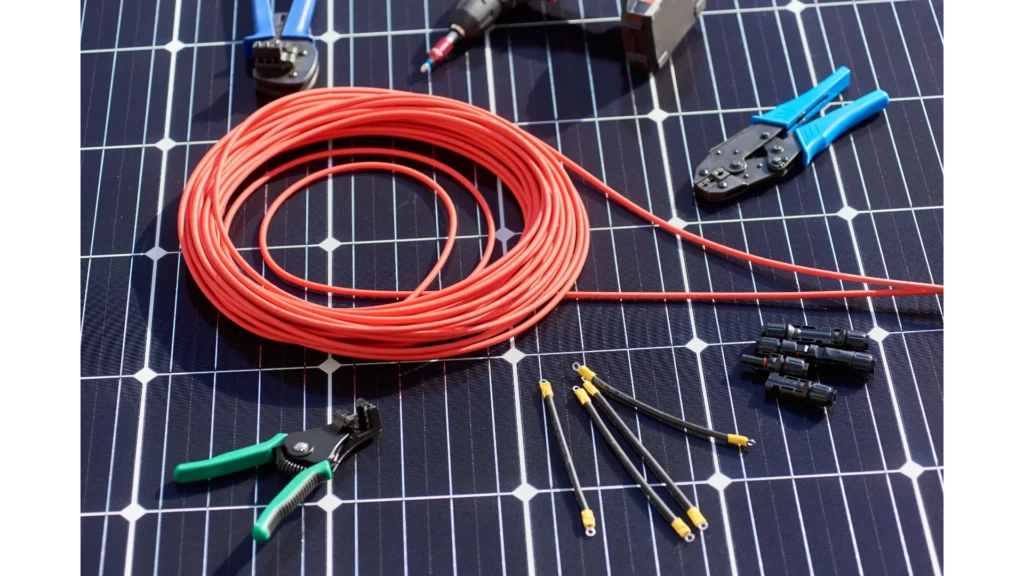
As the world moves towards a more sustainable future, many homeowners install PV panels in their homes. These systems offer numerous benefits, such as cost savings, reduced carbon footprint, increased energy independence, and the ability to generate much electricity from sun exposure.
However, for those who have already installed a solar panel system on their property, whether they can add more panels in the future often arises. The answer is yes – adding more solar panels to an existing system is possible. Doing so can increase energy production and reduce reliance on traditional power sources.
However, before deciding to add more solar panels and batteries, it’s important to assess your current system’s capacity and work with a qualified installer to ensure that any new inverters are properly integrated into your existing setup. In this article, we will explore the benefits of adding more solar panels and batteries and guide you through assessing your current system and working with professionals to upgrade it in the future.
The feasibility of expanding the capacity of a solar panel array and battery is contingent upon various factors, such as the size and composition of the existing installation, local regulations, and available electricity resources. When considering expansion possibilities and power projects, evaluating the current system’s capabilities is essential, as determining if additional panels can be accommodated without requiring significant upgrades or rewiring. Adding more panels to an already maxed-out system could cause safety hazards or lead to underperformance issues with the battery.
Furthermore, local regulations may limit how much energy a household can produce using solar power. Some regions have net metering policies that allow homeowners to sell excess electricity back to their utility companies at market rates. However, others may cap how much surplus energy households can generate or discourage adding more panels altogether due to concerns over grid stability. It is crucial for homeowners considering expanding their solar panel systems first to check with their local utility company regarding any limitations on battery, inverter, installation, and upgrade.
Adding more solar panels to a current system depends on space availability and financial resources. Homeowners must ensure that they have enough roof space or yard area for additional panels while also being mindful of budget constraints associated with purchasing new equipment. Ultimately, careful planning and consideration of these factors are necessary to determine whether successfully expanding one’s solar panel array is feasible.
Expanding the photovoltaic array can lead to increased power output, cost savings, and decreased reliance on traditional energy sources. Adding more solar panels to an existing system allows homeowners to generate more electricity and reduce their dependence on fossil fuels. Additionally, increasing the size of a solar panel system may qualify for additional incentives from local or state governments.
One benefit of adding more solar panels is that it increases the overall efficiency of the system. As solar panels convert sunlight into electricity, having more panels means a greater chance of capturing energy from the sun’s rays. This leads to a higher output of electricity which can be used to power appliances, heat water, or even charge electric vehicles.
Finally, another advantage of adding more solar panels is that it future-proofs one’s home against rising energy costs. With unpredictable changes in electricity prices and environmental regulations looming, investing in renewable energy sources like solar power can insulate homeowners against these potential issues. By expanding their photovoltaic array now, individuals can enjoy peace of mind knowing that their electricity needs will be met well into the future while reducing their carbon footprint and positively tackling climate change. Expanding the battery system size also ensures even greater energy independence and resilience.
Evaluating the existing power capacity of a photovoltaic array is crucial in determining the potential for increased electricity output and reduced dependence on traditional energy sources. Before adding more solar panels to your system, it’s important to assess your current installation’s power capacity and determine whether additional panels can be accommodated.
This assessment can be done by considering several factors, such as:
The size of the roof or available space for panel installations
The orientation and tilt angle of the panels
The efficiency of the existing solar panels
By evaluating these factors, you can ensure that any added panels from a solar installation company are installed correctly and efficiently. Additionally, assessing your system’s current capacity will help you avoid overloading your inverter or electrical components with solar batteries.
It’s worth noting that adding more power might not always lead to a linear increase in energy production. This depends on the age and type of your existing solar panels. For instance, adding new ones might not significantly improve overall performance if you have older, less efficient solar panels combined with newer ones with higher power.
Therefore, working with a professional installer who understands how different PV panels interact before expanding your panel array is essential for maximizing power output.
In conclusion, assessing your current system’s capacity is critical when deciding whether to add more solar panels. By taking into account key factors like panel size and orientation and their relative efficiency levels, you can avoid overloading electrical components while maximizing energy output. Working with an experienced installer who understands how different modules interact will also help ensure that any added panels are installed correctly and efficiently for optimal performance.
Collaborating with a knowledgeable and certified solar installer is essential to ensure that your photovoltaic array operates efficiently and complies with local regulations. A professional solar installer can evaluate your current system’s capacity and recommend expanding it if necessary. They will also be able to advise on the best location for additional panels, considering factors such as shading, orientation, and roof pitch.
When working with a qualified installer, it is important to communicate your future energy needs so that they can design a system that allows for expansion. This may involve installing an inverter that can handle more power or leaving extra space on your roof for additional panels. The table below outlines some key considerations when choosing a solar installer.
| Factor | Considerations |
| Certification | Look for a NABCEP-certified installer for your solar panel system, indicating they have met rigorous industry standards for your solar energy system. |
| Experience | Choose an installer with extensive experience designing and installing systems similar to yours. |
| Reviews & References | Check online reviews and ask for references from previous customers. |
| Warranty & Maintenance | Ensure the installer offers comprehensive warranties on equipment, installation workmanship, and ongoing maintenance services. |
By working with a qualified solar installer who understands your long-term energy goals, you can ensure your system remains flexible enough to accommodate future changes. Whether you want to add more panels or upgrade other components of the system, a professional installation team can help you plan to maximize the benefits of clean, renewable energy.
Incorporating additional photovoltaic modules into an existing solar energy setup requires careful consideration of the available roof space, electricity demand, and compatibility with the current equipment.
To begin with, it is essential to assess whether the solar panel system has enough capacity to accommodate new panels. One way to do this is by examining your energy usage over a given period and comparing it against the output of your current solar panel installation.
Compatibility with the current equipment is another critical factor when integrating new solar energy panels into an existing system. For instance, if you plan on adding several new panels that utilize different types of inverters than those presently in use, it can lead to inconsistencies in performance and reduced efficiency.
As such, it’s recommended that before installing any additional solar energy module or component into your existing solar energy system, you consult a licensed professional solar energy installer who can provide insights on how best to integrate new solar energy components seamlessly.
Finally, incorporating more solar panels into an existing setup may require additional mounting space. Therefore, you should ensure enough room on your rooftop for any future expansion plans before embarking on any installation project.
Additionally, taking such precautions ensures that future modifications do not compromise the structural integrity of your property or cause damage to your roofing material. By considering these factors beforehand and working with licensed professionals throughout each stage of the solar energy installation process, homeowners can confidently add more photovoltaic modules without compromising their entire system’s functionality or safety.
Solar panel systems have become increasingly popular for their environmentally-friendly and cost-efficient benefits. As homeowners begin to recognize the advantages of solar energy, many wonder if they can add more solar panels to their current system in the future.
The answer is yes; it is possible to integrate new panels into your existing system. However, assessing your current system’s capacity is essential before adding more panels. Working with a qualified solar installer can help ensure your system can handle additional panels without causing any damage or inefficiencies.
Integrating new panels into your existing system requires careful planning and installation by professionals who understand the intricacies of solar technology. In conclusion, adding more solar panels to an existing system is a viable option for homeowners looking to increase their renewable energy usage.
You can successfully integrate new panels into your system without compromising efficiency or safety by assessing your current capacity and working with a qualified installer. As the demand for renewable energy grows, adding more solar panels may be an excellent way for homeowners to reduce their carbon footprint and save money on energy costs over time.
Solar panels have become an increasingly popular source of renewable energy in recent years. The lifespan of solar panels varies depending on the quality and type of panel and the environmental conditions they are exposed to.
Typically, most solar panels are designed to last 25-30 years before their efficiency declines. However, some high-end solar panels can operate for up to 40 years or more. It is important to note that regular maintenance and cleaning can help extend the lifespan of solar panels.
In terms of replacement, it is typically recommended that homeowners replace their solar panels once they reach the end of their useful life. As such, it is advisable for individuals who wish to ensure a consistent supply of energy from their system over time to plan for eventual replacement and consider adding additional solar panels as needed.
When it comes to installing solar panels on a roof, the orientation of the roof is a crucial factor that impacts its efficiency.
While south-facing roofs are generally considered the most desirable for solar panel installation in the Northern Hemisphere, this does not mean that other orientations cannot be utilized.
East- and west-facing roofs can also generate significant amounts of electricity, although they may produce less energy than south-facing ones.
The key to maximizing energy production on a non-south-facing roof is to ensure minimal shading from surrounding trees or buildings and install panels at an optimal tilt angle relative to the sun’s path.
Overall, while south-facing roofs may be ideal for solar panel installation, homeowners should not rule out other orientations as viable options if they have unshaded space available for installation.
When considering the installation of a solar panel system, it is important to ensure that your home’s electrical system is compatible with such a setup.
One crucial factor to consider is the capacity of your electrical service panel, which should be sufficient to accommodate the additional load generated by solar panels.
It may also be necessary to upgrade wiring and electrical components in order to meet safety standards and avoid damaging equipment.
A licensed electrician or solar contractor can assist in evaluating your electrical system’s compatibility and making any necessary upgrades.
By taking these steps, you can ensure that your home’s electrical system is ready for the installation of a solar panel system, allowing you to take advantage of renewable energy options for years to come.
Solar panel systems require minimal maintenance, making them an attractive option for homeowners seeking a low-maintenance renewable energy source.
The most critical aspect of solar panel maintenance is keeping the panels clean and free of debris to ensure optimal sunlight absorption. This can be achieved with regular cleaning, typically every six months or as needed depending on the location and weather conditions.
Additionally, monitoring the system’s performance regularly is essential, which can be done remotely through monitoring software provided by the installer.
Professional inspections should also be conducted annually to ensure that all components function correctly and identify potential issues before they become significant problems.
Proper maintenance will maximize system efficiency and prolong its lifespan, providing long-term energy savings while reducing environmental impact.
One potential solution for the intermittency issues of solar energy is storing excess solar energy during nighttime or power outages.
This can be achieved by using batteries, such as lithium-ion or lead-acid batteries, which store energy generated by solar panels during peak hours.
When there is no sunlight, the stored energy can be used to power homes and businesses.
However, it is important to note that battery storage systems can be expensive and may require maintenance over time.
Additionally, not all solar panel systems are designed to accommodate battery storage, so it is important to consult with a professional before making any modifications to an existing system.
Despite these challenges, the ability to store excess solar energy has the potential to increase the reliability and independence of renewable energy sources in the future.

How Long To Install A Residential Solar Panel System? Installing a residential solar panel system is a significant investment that can provide homeowners with substantial
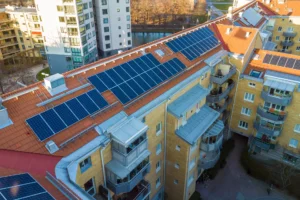
Can I Install Solar Panels On A Rental Property? As more individuals and businesses seek to reduce their carbon footprint, solar energy has become an
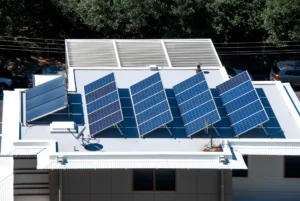
Can I Install Solar Panels On A Flat Roof? Solar panels are a popular and sustainable energy source many homeowners install on their property. However,
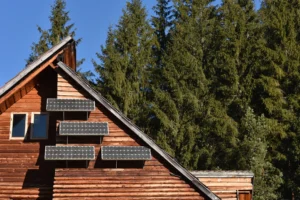
What Is The Difference Between On-Grid And Off-Grid Solar Systems? Solar power is becoming increasingly popular for individuals and businesses looking to reduce their carbon
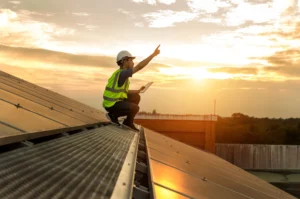
What Is The Best Angle/Direction To Install Solar Panels On My Home? The use of solar panels as an alternative source of energy has become
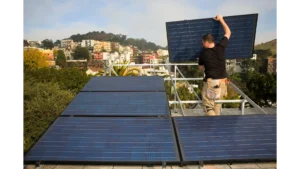
Best Mounting Options for Solar Panels: A Comprehensive Guide Solar energy is a renewable and sustainable source of power that has been gaining popularity in